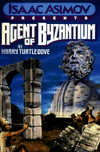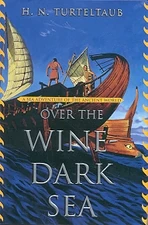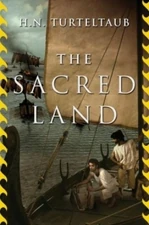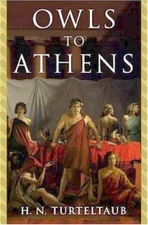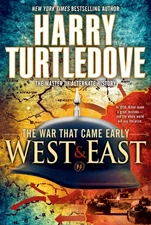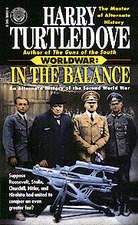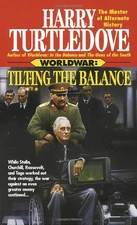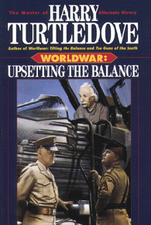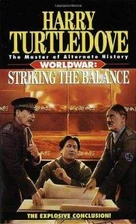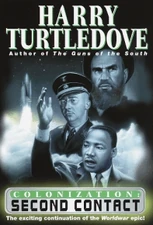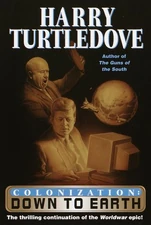| Arab Republic of Egypt | |
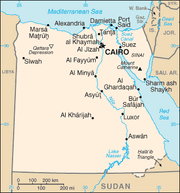
| |
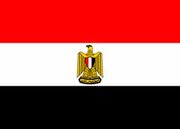
| |
| Country | |
| Continent: | Africa (Most of country) Asia (Sinai Peninsula) |
| Capital: | Cairo |
| National Language: | Arabic |
| Government: | Unitary semi-presidential
republic |
| Status in OTL: | Active |
The Arab Republic of Egypt is a country mainly in North Africa, with the Sinai Peninsula forming a land bridge in Western Asia. Egypt is bordered by the Mediterranean Sea to the north, the Gaza Strip and Israel to the northeast, the Red Sea to the east, Sudan to the south and Libya to the west.
Egypt is one of the most populous countries in Africa and the Middle East. The great majority of its people live near the banks of the Nile River. The large areas of the Sahara Desert are sparsely inhabited. About half of Egypt's residents live in urban areas, with the majority spread across the densely-populated centres of greater Cairo, Alexandria and other major cities in the Nile Delta.
Egypt is famous for its ancient civilization and some of the world's most famous monuments. Tourism has helped Egypt to become one of the most developed economies in the Middle East.
After the fall of its own long-lived empire, Egypt fell to a series of foreign rules, including Persia, Macedonia, the Roman Empire, the Byzantine Empire, and finally the Ottoman Empire. The invasion by France in 1798 helped spark an independence movement that, after some strife, saw de facto independence in 1805 under a hereditary monarchy. This monarchy ruled until 1952.
However, Britain asserted influence in Egypt beginning in 1882. Years of strife led to Egyptian independence in 1922, although Britain maintained a presence in the country throughout World War II. In 1952, the fall of the monarchy insured Egypt's complete self-governance.
Egypt in Agent of Byzantium[]
Egypt was a province of the Roman Empire. It followed the teaching of the Orthodox Church, though some regard for the old gods remained.
In Etos Kosmou 6818, Magistrianos Basil Argyros visited Alexandria to solve an anakhoresis by workers who were constructing the Pharos.
In Etos Kosmou 6826 Egypt also became the starting point of an anti-icon movement. It had remained a stronghold of the Monophysitism heresy which emphasized Jesus' divine nature. This led to the idea that depicting Christ was blasphemous and so icons should be banned.[1]
Constantinople suffered one riot when an Egyptian monk preached this doctrine.[2] A worse riot took place several weeks later. Sailors from a grain ship from Alexandria spoke of the turmoil up and down the Nile due to the controversy. Pro and anti iconists began fighting leading to a four day riot.[3]
This caused Emperor Nikephoros III to convene an ecumenical council to resolve the matter.[4] Not only did Argyros develop the key argument in favor of icons,[5] he discovered that the Persian agent Mirrane helped inflame the crisis.[6]
Egypt in Days of Infamy[]
The Kingdom of Egypt was a major lynch pin of the British Empire as the Suez Canal allowed the British to supply its forces in India and Asia. During World War II, the country came under threat from the combined armies of Italy and Germany.
In late 1942, the Americans joined the British in Egypt and smashed the Axis forces there, driving them from the country.[7]
Egypt in "The Fake Pandemic"[]
Egypt was a part of the Roman Empire. The mysterious Martinus Paduei knew that a plague was destined to arrive in Constantinople in 542, but that it would arrive in Pelusium, Egypt in 541. Paduei devised a plan to halt the pandemic, and recruited the Roman quaestor Tribonian to help.[8]
Egypt in Hellenic Traders[]
After the death of Alexander, Egypt was ruled by Ptolemaios, who feuded with Antigonos' forces in neighboring lands.
- This article or subsection is a stub because the work is part of a larger, as-of-yet incomplete series.
Egypt in "The Horse of Bronze"[]
The country of the sphinxes was located south, across the Inner Sea, from the centaurs' country. The sphinx country had enormous stone piles erected next to an enormous statue of a sphinx.[9]
Egypt in In the Presence of Mine Enemies[]
Egypt was part of the Greater German Reich. The Nazis exterminated the "inferior" native Arab and Egyptian populations. Surviving pockets were used as slave labor. It remained part of the Reich into the 21st century.[10]
Egypt in "Myth Manners' Guide to Greek Missology"[]
Andromeda visited Egypt after defeating the Gorgons. She saw the Pyramids and the Lighthouse of Alexandria, and visited the Sphinx, whose riddle she found to be common knowledge.[11]
Egypt in "Suffer a Sorceress"[]
In 1118, Anna Komnene's witching ritual from the Aithiopika transported her astral body to Egypt, or at least a reasonable simulacrum thereof. She found herself in an ideal scene involving the Nile and a crocodile - and also a hedgehog.
Egypt in Supervolcano[]
While the Yellowstone Supervolcano eruption had relatively mild climatic effects on Egypt, the country was still devastated. The eruption caused an increase in and regularity of rainfall. It would seem modest by American or European standards but in a country that drew its water from the Nile and had no regular rainstorms, it was worse than a monsoon. Most buildings were made with sun-dried mud bricks which were cheap, readily available and strong enough for construction of low-rise buildings. But when soaked with even mild rain, they reverted to mud and buildings collapsed.[12]
Egypt in Through Darkest Europe[]
Egypt, located east of the Republican Sultanate of the Maghrib, was one of the most modern and enlightened nations in the world.
Egypt in "Two Thieves"[]
A large number of Egyptian peasants from the 3rd-century-BC reign of Ptolemy III were resurrected on the part of Riverworld dominated by New Constantinople. They converted to Eastern Orthodox Christanity and became loyal subjects of the Komnenos dynasty.
Egypt in The War That Came Early[]
The Kingdom of Egypt, though an independent nation, was firmly under the political influence of the British Empire.
During World War II, it was among most strategically important colonies of the empire as it contained the Suez Canal. Its ports allowed all men and materiel to flow to the 8th Army, India, and Asia.
In 1941, Italy launched an invasion of Egypt in order to punish England for leaving its alliance with Germany. However the invasion was a failure as the British easily defeated the Italians and pushed them back into Libya in the closing months of 1941.
Before the British could definitively defeat the Italians at Tobruk, the German Afrika Korps intervened. By the beginning of 1942, the British were in retreating back into Egypt.
However, the Afrika Korps' campaign ultimately proved futile. Under the terms agreed following the overthrow of Hitler by the Committee for the Salvation of the German Nation, Germany had to evacuate its forces from Egypt, as from most territories occupied during the war.
During the 1920s Ronald Cartland and his sister Barbara visited Egypt and saw the Pyramids, as did Alistair Walsh, as the two men shared with each other in the 1940s.
Egypt in Worldwar[]
Though nominally independent, the Kingdom of Egypt was firmly under the political influence of the British Empire and major linchpin as it controlled the Suez Canal. During World War II, the country had seen invasion first by the Italians and later, the Germans, but nether managed to conquer the country.
When the Race arrived in mid 1942, they found the climate of Egypt very tolerable, and easily defeated the British, pushing them all the way back to the Canal. The British held here, until 1944, when the Race lunched an offensive, driving them back into Palestine, and defeating them. At the Peace of Cairo later that year, Britain was forced to recognize Egypt as a Race colony.[13]
In the Peace that followed, the Race chose Egypt's own capital, Cairo as the capital of all Race Colonies on Tosev 3 because of the country's hot, arid climate and strategic location. The majority of the population practiced Islam, and the region was not considered a pacified colony.
References[]
- ↑ Agent of Byzantium, 2018 edition, pgs. 204.
- ↑ Ibid., pgs. 194-196.
- ↑ Ibid., pgs. 201-202.
- ↑ Ibid., pg. 204.
- ↑ Ibid., pgs. 216-217.
- ↑ Ibid., pgs. 232-233.
- ↑ End of the Beginning, pg. 138, mmp.
- ↑ Lest Darkness Fall & Timeless Tales Written in Tribute (second edition), pgs. 383-388, loc. 5013-5085.
- ↑ The First Heroes, p. 104.
- ↑ In the Presence of Mine Enemies, pg. 385.
- ↑ E.g., Counting Up, Counting Down, p. 281, paperback.
- ↑ Things Fall Apart, pgs. 282-283, HC.
- ↑ See the Colonization map.
| |||||||||||||||||||||||||||||||||||||||||||||||||||||||||||||||||||||||||||||||||||||||||||||||||||||||||||||||||||||||||||||||||||||||||||||||||||||||||||||||||||||||||||||||||||||||||||||||||
